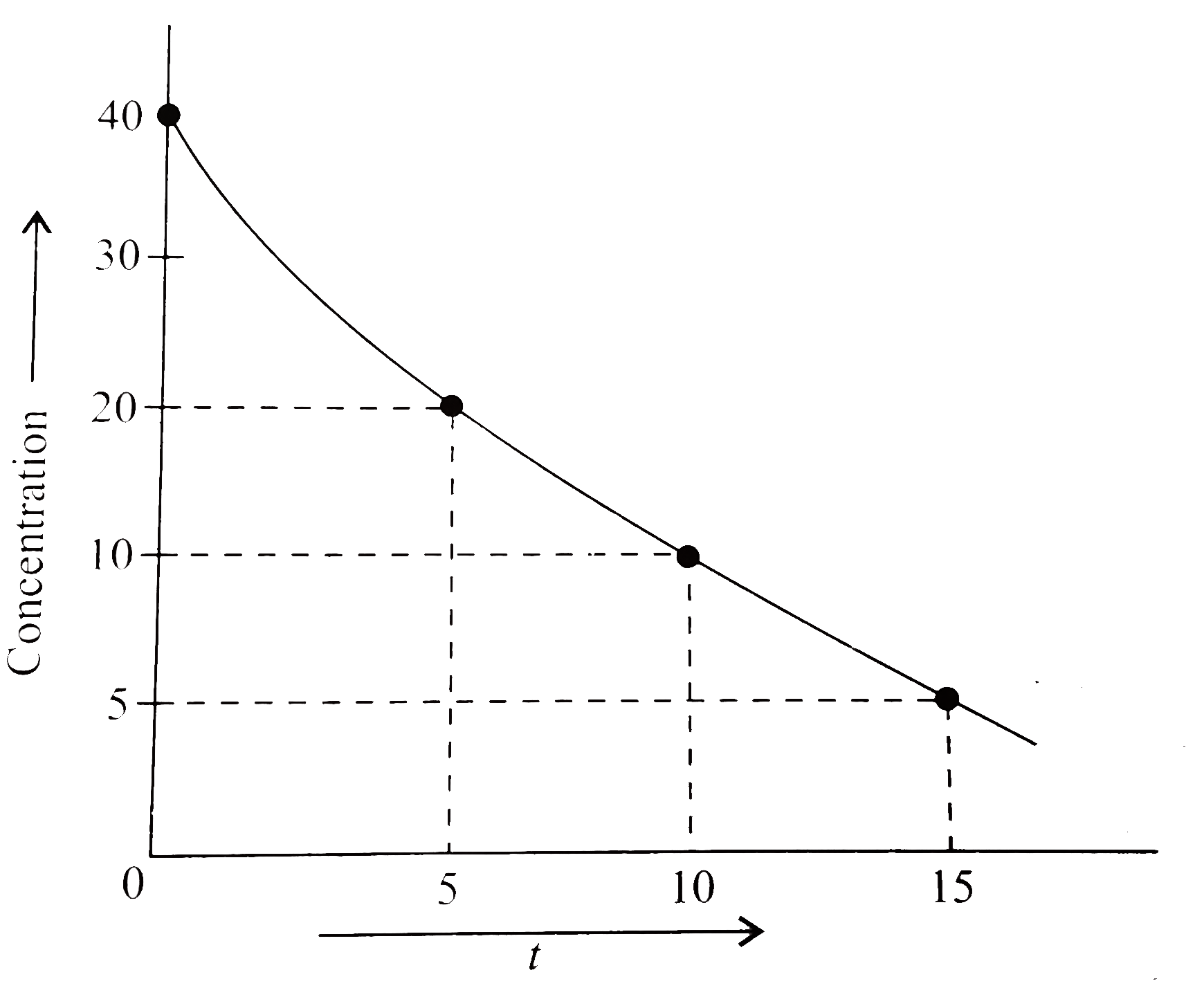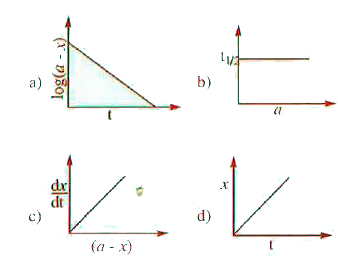For a reaction , a graph was plotted between reactant concentration c and time as shown in the figure below.

Identify the order of the reaction with respect to the reactant. Can the concentration of the reactant be theoretically zero after infinite time?Solution in Kannada
form graph, it is evident that
a. Concentration of 40 reduced to 20 in 5min.
b. 20 reduced to 10 in 5min.
c. 10 reduces to 5 in 5min.
i.e., half is independent of concentration which is characteristic of first order. In first order, the concentration of the reactant can never be the theoretically zero.
Similar Questions
Which of the following graphs represent a first order reaction (a=initial concentration of reactant, x=concentration of reactant consumed, t=time)

View SolutionFor Zero Order Reaction, Plot of Concentration of Reactant v/s time is a straight line graph with
View SolutionWhich of the following graphs represent a first order reaction (a=initial concentration of reactant, x=concentration of reactant consumed, t=time)
View SolutionPlot a graph showing variation in the concentration of reactants against time for a zero order reaction.
View SolutionFor a zero-order reaction, with the initial reactant concentration a, the time for completion of the reaction is
View SolutionA plot of reactant concentration versus time for a reaction is a straight line with a negative slope giving the rate constant, and the intercept, giving the initial concentration of the reactant. The order of the reaction is
View SolutionFor a reaction , a graph was plotted between reactant concentration c and time as shown in the figure below.

Identify the order of the reaction with respect to the reactant. Can the concentration of the reactant be theoretically zero after infinite time?
View SolutionFor a zero-order reaction, the plot of concentration of reactant versus time is: (intercept refers to concentration axis)
View Solution